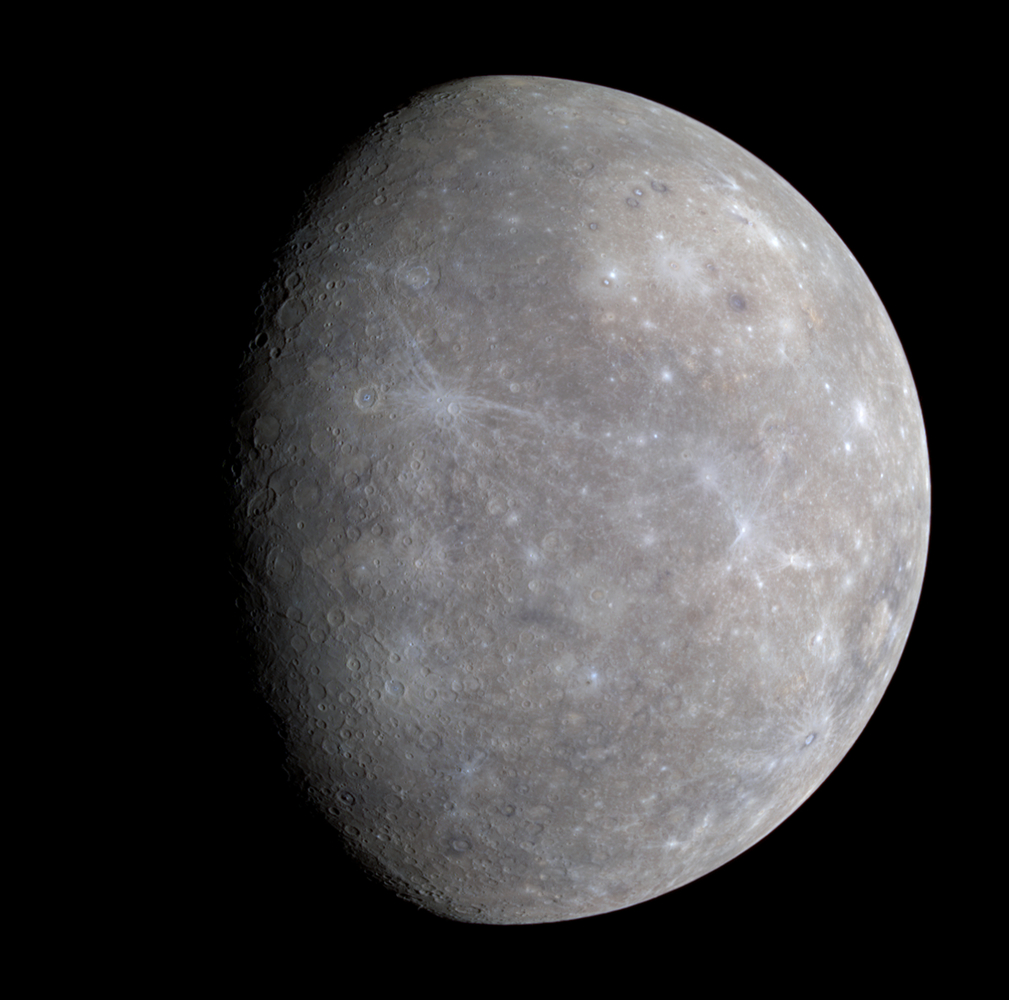Messenger probe crash-lands on Mercury
Interview with
NASA's Messenger probe's mission to the Solar system's innermost planet, Mercury, has now ended. At the end of April, the spacecraft, which has been orbiting Mercury for over 4 years, slammed into the surface at a speed of about 9000 miles per hour; it will have left behind a substantial  crater, but more important is the academic legacy of the mission, and space scientists are now preparing to launch a new probe to Mercury in its wake. One of the researchers on this project is the Open University's David Rothery, who explained to Chris what Messenger achieved...
crater, but more important is the academic legacy of the mission, and space scientists are now preparing to launch a new probe to Mercury in its wake. One of the researchers on this project is the Open University's David Rothery, who explained to Chris what Messenger achieved...
David - MESSENGER was launched in 2004. It had a cruise of about 5 years, then it flew past Mercury 3 times. On MESSENGER's fourth approach to Mercury, it creeped up sufficiently slowly, and was able to be captured into orbit about the planet and mapped the whole planet - imaged the surface, got spectroscopic data of the surface, got x-ray data of the surface, and probed the magnetic field in quite some depth as well.
Chris - Can you tell us a bit about the anatomy of Mercury?
David - Mercury is the smallest planet, larger than the moon but smaller than Mars, but its gravity is about the same as that of Mars because it's a much denser body. Its core, we calculate must occupy about 80 per cent of its volume. It's got a relatively thin impoverished rocky shell around the core.
Chris - Is that core made of iron in the same way that Earth's core is made of iron?
David - Yes, the core is made of iron, but there's something keeping the other parts of the core molten. We know that's the case because Mercury generates its own magnetic field like the Earth does, but Mars doesn't do it, the moon doesn't do it, Venus doesn't do it. Mercury has got a fluid outer core, acting like a dynamo to generate the magnetic field. On top of that, as I've said, we've got this relatively thin zone of rock. We used to think that was because Mercury had been hit by some enormous impact which had blasted away the outer parts of the early planet. But now we've got there with MESSENGER, we've discovered that the rock of Mercury is rich in volatile elements -those are things that would be lost in a violent collision - and we've also got volcanic vents in many parts of Mercury created by explosive volcanic eruptions. Now, you don't get an explosive volcanic eruption unless you've got something which can come out of the magma as it nears the surface and expand as a gas to drive the explosions. We're a bit flummoxed about Mercury frankly. We don't know how it formed.
Chris - What's the temperature like on the surface?
David - By day, near the equator, it exceeds 400 degrees centigrade. But at night, because the nights are quite long (the nights last 88 Earth days) at night, it goes below minus 150 centigrade. So, its a planet of very great temperature extremes.
Chris - What have scientists been able to learn in the dying days of MESSENGER?
David - It's been closer to the surface than ever before. It was getting down to 5 km before they used their remaining fuel to get it slightly higher. That gave the most detailed images we have of Mercury. We can learn from that about the small scale craters that have affected Mercury and the more we know about the cratering history, the better we can try to work out the age of Mercury's surface.
Chris - Has it enabled scientists to nail any really big questions?
David - It's probably given us more big questions! We used to think it's a cinder, that close to the sun the rock's been burned away. It's been hit by something which has flung off most of the rock, but it should've lost its volatiles. Now we realise that hasn't happened. We're thinking Mercury maybe formed elsewhere, somewhere further from the sun, richer in volatiles. And maybe to explain the large core, a story that came out last year is that Mercury wasn't the target of a giant impact, it was the impact! Mercury careened into the Earth or Venus, stripped off a lot of it's outer layers in the process. So, Mercury is now being described as a hit and run impactor.
Chris - So, any plans on the part of the European Space Agency or others to go back and take a look at some of the big questions that MESSENGER has now enabled us to ask?
David - Well, very much so. We have a spacecraft almost completed called BepiColombo. It will be launching in 2017. We'll assume our science orbit about Mercury April/May 2024 - so that's 9 years from now. The questions that we have to seek to answer have been strongly modified by what MESSENGER has taught us. One thing we want to do is find the crater that MESSENGER made when it crashed just last week.









Comments
Add a comment